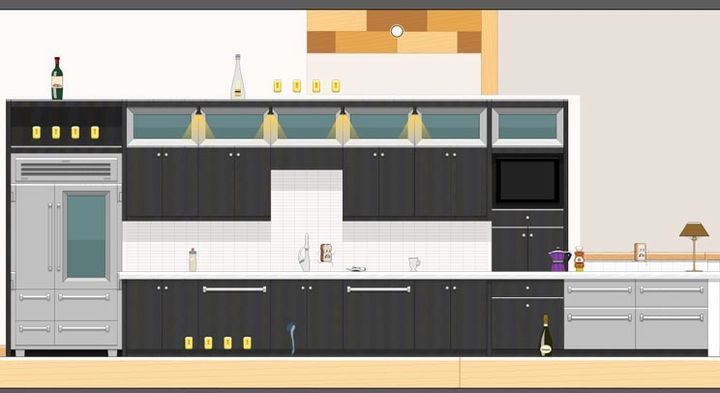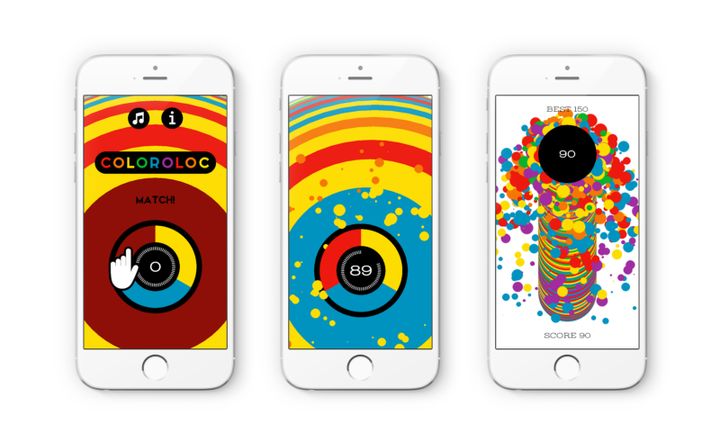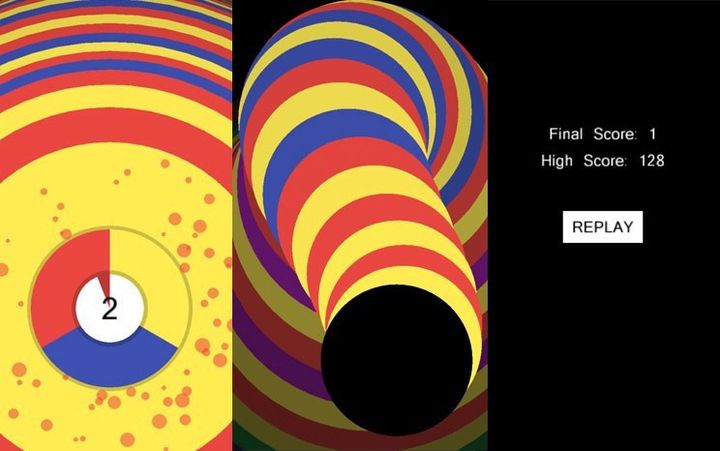
Imagine you are — bear with me — a slice of bread. You scurry over the granite countertop, leap over a cereal box, and slide through an extra virgin olive oil slick, just barely escaping, you guessed it — a toaster!
Congratulations, you’ve survived Toast Escape: The Best Game with Sliced Bread, a side-scrolling auto-runner mobile game that my firm, L+R, was developing in-house last year. It was an initiative outside of our wheelhouse, but entirely within our realm of excitement, creativity, and engineering capabilities. Our intention was to capitalize on the growing trend in casual mobile games as well as create an internal revenue-producing product for L+R.
The process was a whirlwind. The game unfortunately never made it to market due to a misalignment in our intentions. Even still, I am convinced that working on “Toast Escape”, an ultimately failing app, was arguably the most valuable project our team worked on all year. While we didn’t make a penny on the project (actually, we may have lost a few…), the creative fire it lit throughout the entire company was well worth the cost.

The idea for Toast Escape came from some fun internal brainstorming and pitch sessions with our team. It actually originated as a way for us to give one of our really talented programmers, Kenny Sun, now of Circa Infinity fame, who was into making games, an internal project for us all to work on. Once the concept had a solidified vision amongst our team, we explored opportunities to monetize the application. From there, our team took off running. Loads of ideas started pouring out of everyone, from sponsored food items as power-ups (think Vegemite to make you larger and Foxy Lettuce for hang-gliding off the countertop) to full-game skins based on geolocation. One of our concepts was a Dunkin’ Donuts-themed world that would convert the level to that of the interior of the shop when a user entered into a physical store location.
While I was at the helm of the game design document (which ended up being around 30 pages), it seemed like everyone was taking a special interest in this project. I worked with Alexa Wright whose incredible character development and illustration work was blowing me away. Ryan led design production, working with Anais Reitas on asset creation of the most iconic items found in a kitchen and Housseynou Fall on the user interface designs. And finally, there was Kenny at his keyboard, coding up a storm- making hot crossed buns. We had turned our team into a prolific game studio-powerhouse overnight.


While the ideas being generated were exhilarating in their own right, it was equally fascinating to watch the passion with which my team was working on this project. The concept was ripe for a metropolitan demographic, to play on the train, waiting for the bus, etc., set in the countryside of a huge elegantly-designed farmhouse kitchen with rolling hills seen out the window. I’d get emails and texts in a group chat far after work hours of photos inside Bed, Bath & Beyond, ideas for strategic partnerships, powerups, and in-app purchases.
We were excited about all the possibilities within the game and we continued to devote resources to the project. As the project continued, the number of challenges we faced grew exponentially. We hastily solved many of these issues by adding more features and functionality, pushing the launch farther and farther away. My co-founder Ryan and I were facing an uphill battle, and we kept building our hill higher and higher. Ultimately, the project was costing us a lot more than we had planned for, so we tabled it and our team transitioned back to our client facing work.
Feeling like a big ol’ floppy failure, I thought: what went wrong? After all, we had so many creative ideas, a talented team, and an award-winning track record of building great digital products and brands for others. Once we attempted to do something internally, it crumbled. We were initially inspired by looking at similar agencies that developed apps and services in-house and seemed to launch them flawlessly — Tiny Speck built Slack, IDEO built Spark Camera, and 37signals built BaseCamp. At first we thought it had been an oversight on our part. But it dawned on me, those models were all utilities, not games. However, as we dug deeper, that fact became besides the point, and our true take-away became clear.
While we all knew the game was a great concept, our execution lacked insights into game design. We fell in love with too many features and we were never able to say no to any of the additions. In the creative process, this approach can lead to some incredible things, but in our case it lead to a spiral of a goal with no end in site.
But I wasn’t convinced. I knew it wasn’t all bad. Though I couldn’t quite put my finger on what made working on this project feel so good, when it ultimately wasn’t successful. Mulling this over with Jamie King, co-founder of the renowned Rockstar Games and my mentor and advisor at L+R, a lightbulb went off. He explained that,
“A deep understanding of gaming encourages you to think in terms of simple feedback loops. Making a great game forces you to focus on your end user and understand every step of their path.”
And there was my answer: feedback loops. When creating something for a client, they are the feedback. A project is successful when the client is willing to bet that the work will help increase their revenue in one way or another. That feedback is inherently subjective because there is no way of knowing if a product will produce revenue while it is in the process of being made. So there are a lot of complicated parameters we are usually working within. Creating a game, on the other hand, a project that is inherently fun, tore down the parameters and constraints we were used to working within: we could just get excited and let it all flow. In the context of building a game, everyone’s voice was heard equally, and no holds barred creativity was rewarded. The ideas and work we produced were both exciting and inspiring.
We had been using a firehouse to put out a candle. The same benefits could be gained from a project like Toast Escape, but we didn’t need to bleed so many of our resources.
Enter: gen 2. A few months later, we had another go at making a mobile game. With a shift of intent, our sights were set on making something quickly, that we loved and were proud of.
We built Coloroloc — A game of mixin’ and matchin’ colors, which we placed in Apple’s App Store and the Appstore for Android. It felt good. Our team now had a recipe for internal creative growth, not to mention some awesome games we could bring to market.
- Create boundaries: have a clear start and finish line.
- Identify the builder: Find someone within your team with an untapped skill, outside your current capabilities, and run with it.
- Apply imagination: Everyone is empowered to take an active roll in creating and developing the vision of the project.
- Use everything and the kitchen sink: Never say no to the evolution of the idea.
- Deliver.
Once we put ourselves in the driver’s seat, put monetization behind us, and focused on completing a concise product, we rose to the challenge and developed something succinct and beautiful. Not only are we proud of the game, but we have grown immensely as a team because of it.

While Coloroloc isn’t perfect, the process of building it together not only taught us better ways to communicate ideas, but also forced us to use aesthetics strategically while we were simultaneously consumed with the objectives of the task at hand. Ultimately it was invaluable to the continuous growth of L+R’s philosophy and the strength our team. It also allowed us to genuinely expand our offering and capabilities. Almost immediately after Coloroloc launched we were asked to work on a mobile game for a legendary American football coach and apply our freshly baked team dynamic and design-thinking to it. We continue to apply this synergy to all of our client projects.

Through the process of deciding whether a syrup slick stops you in your tracks or if spilled milk makes you cry, we clued into something we hadn’t been able to fully articulate before. Although client facing work offers an exciting puzzle of fitting creativity with functionality, the specific parameters, needs, and resources of the client tend to put a top on the ultimate vision of the project (and luckily there was pushback from clients on our idea to geo-locate all 60,000 festival attendees via our mobile app to turn their phones into a jumbotron, visible from space! It’d be dope, but we’d be broke.)
In an industry where creative and passionate people are working within strict parameters and guidelines to create appealing and functional design, it is so important to create opportunities to work without those constraints. We found that when we disrupted that client-facing cycle, gave ourselves the time and space to collaborate on small internal projects — mainly, let our people work on projects they could let loose on, where the only intent was to create something we were proud of — we started cooking with gas.
- -
Alex Levin is a Founding Partner and Director of Strategy at L+R, a design research & development firm focused on user experience and creative technologies that bring the design process to businesses.

